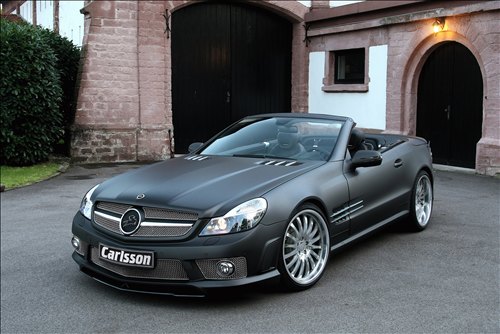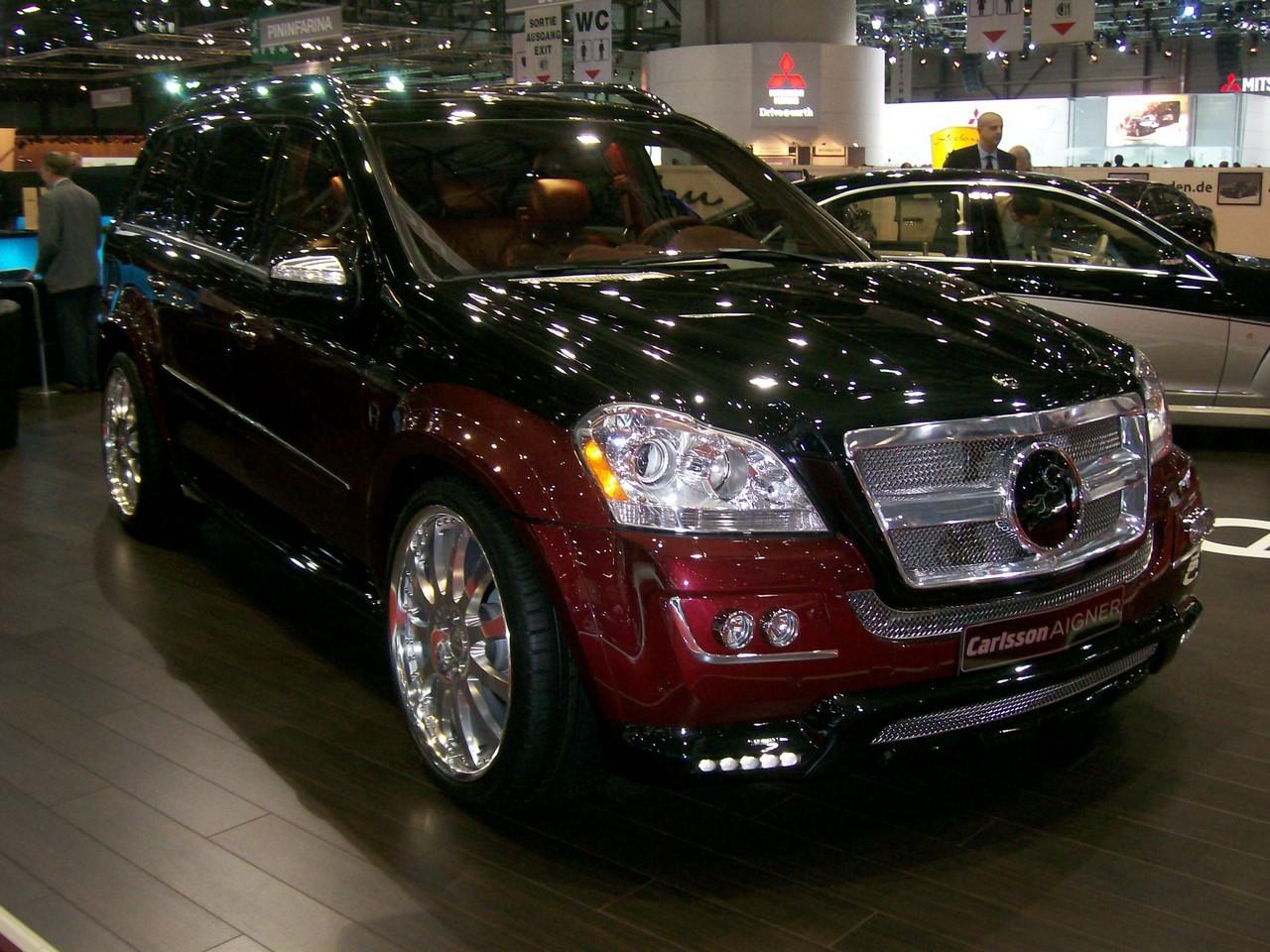If these roads were always kept completely cleared, it was not the same for the third class roads and car parks, which were cleared with difficulty by means of rotary machines. They were made available only a few days before the Opening of the Games.
France, Grenoble
If these roads were always kept completely cleared, it was not the same for the third class roads and car parks, which were cleared with difficulty by means of rotary machines. They were made available only a few days before the Opening of the Games.
The contributions of the servise for the town of Grenoble

THE REYNIER-VERLAINE VIADUCT
In order to ensure service to the urban development zone, and to improve traffic conditions in the Southern part of the town, the key plan of the Urban Group of the town of GRENOBLE made by Henry BERNARD, included the building of a new East-West road, using part of the expropriations of the roads Louise MICHEL, Albert REYNIER and Paul VERLAINE, and linking the motorway B 48 (right bank of the river Drac) to the new Southern centre of the town.The town of GRENOBLE decided in 1965 to build this road which was so important for serving the Olympic Village and the Coach station. After preliminary studies, it was decided to give the new road two single direction lanes, each with three tracks, separated by a central earth platform.
GRENOBLE-VEYNES and GRENOBLE-MONTMELIAN
Crossing over the R.N. 75 (cours de la Liberation) and the railway lines S.N.C.F. GRENOBLE-VEYNES and GRENOBLE-MONTMELIAN, the new artery is continued by a construction in a straight line 540 m long which includes:— two approach slopes 107 m long to the West and 118,40 m to the East;There are, besides the liaisons with the R.N. 75, two intersections permitting exchanges with the roads BEAUMARCHAIS, Louise MICHEL, and AMPÈRE. Two underground passages for pedestrians were planned in the South part, near a densely populated zone (Paul MISTRAL district) the stadium and the BACHELARD park.
— a viaduct 102 m long crossing to the West, the cours de la Liberation and its side lanes;
— a viaduct 112,625 m long crossing to the East the railway lines and the rue Général Mangin;
— between the two viaducts a platform between the retaining walls, flanked by two slopes linking the R.N. 75 to the Eastern side of the new road.
The work was begun in July 1966 and was completed in December 1967. The total cost was 11 million Francs.
New skilifts at Chamrousse
Four of these skilifts were directly implicated in the organization of the Olympic Games:
— the chairlift of GABOUREAUX (vertical drop 525 m) replaced the skilift of the same name, which was removed to permit the equipment of the finishing stadium;This equipment, costing altogether 2,600,000 F was financed by the Department of the Isère and subsidised, 80% for the first and 50% for the three others, by the Ministry for Youth and Sport.
— the chairlift of the Col de la Balme (vertical drop 190 m) served the slalom training zone as well as the access to the lower half of the Men's Downhill trail;
— the Vallons chairlift (vertical drop 380 m) served the greater part of the giant slalom trails, and the Ladie's Downhill run;
— the chairlift of Lake Robert (vertical drop 250 m) served the slalom training zone; unlike the three former chairlifts which started from the Recoin, it extended North of the Cross of CHAMROUSSE, the skiing ground of the resort.
MONTAZ and MAUTINO
The Department of the Isère wished to develop that part of the skiing area not occupied by the Olympic trails, and financed, with 1,600,000 F, the building of two chairlifts starting from ROCHE-BÉRANGER:
— the chairlift of the Perche (Vertical drop 380 m) put into service in November 1966;
— the chairlift of the Achard Lakes (vertical drop 320 m) put into service in November 1967. These two were built by POMAGALSKI.
Chamrousse trails
Downhill run
The traditional trails of the resort were largely used for the men's and women's Downhill Race, as their general characteristics seemed satisfactory. It was however necessary to calibrate them, to get rid of bottle necks, and rock steps, to blow up rock masses, to cut down trees, etc...Some particular points demanded more important work:
— in the upper third of the Men's Downhill, two rocky ridges were split up to vary the tracing, just after the shoulder of the "Grand Couloir", and at the branch of "Arbre Mort". Another ridge was cut at the beginning of the "false plateau" called "des Grottes", and the "Couloir KRIEG" was banked up.
— on the Women's Downhill trail, a rocky ridge was split up at the start of the "Grand Couloir", and the "Arbre Mort" bend was completely remodelled. An embankment of 12,000 m3 was made at the Vernon stream, to limit the length of a "false plateau" before the finishing schuss.
Slalom
The slopes necessary for the organization of a special slalom must present relatively stiff characteristics and the equipment of a slalom stadium in the immediate proximity of the finishing zone required very important earth works; the natural terrain was in fact cut by a deep ravine, which had to be filled in, and marked by two rocky ridges which were blasted.More than 200,000 m3 of rock embankment had been made before the International Weeks. During these events, the summit zone of the Men's special slalom was judged to be still too flat and a starting hillock, 20 m High (35,000 m3 of rocky material) was heaped at the summit of this trail during the summer of 1967.
The work begun in July 1967 was completed in three months. It was financed by the Department of the Isère, which received a grant of 80% from the Ministry for Youth and Sport. It amounted to 4,400,000 F.
Chamrousse Slalom Trails
The St-ETIENNE-De-St-GEOIRS airport
The Olympic Village, the coach station and the Olympic Car Park were to be built on this former airport ground. The transfer had therefore to be completed, in March 1967, at the latest. Here again this compulsory date was also respected.
The geological nature of the sub-soil, which consists of layers of sand, of aluvio-glacial origin, meant that all necessary material for the construction of runways, parking zones, roads could be found on the spot.
The important road constructions giving access to this airport should be noted, from N. 519, to avoid the difficult crossing of the town of SAINT-ÉTIENNE-de-SAINT-GEOIRS.
THE AERODROME OF GRENOBLE-SAINT-GEOIRS
From 1938, a military aerodrome had been installed about 2 kms to the North of the town of SAINTÉTIENNE-de-SAINT-GEOIRS. This aerodrome, meant to be used to support the operations of the Alpine Army Corps, consisted of a simple flat surface of about 110 hectares which was grass covered and later on used by the Secretariat General to Civil and Commercial Aviation almost exclusively for light aviation.The geological nature of the sub-soil, which consists of layers of sand, of aluvio-glacial origin, meant that all necessary material for the construction of runways, parking zones, roads could be found on the spot.
Important savings were therefore made in the cost of these constructions.
In May 1967, after a preliminary study of expected air traffic during the Games, the decision was taken to extend the runway by 200 m to 2050 m so that it could be used by all types of middle distance aircraft including the Caravelle. In August 1967, it was judged that this airport could be usefully equipped with an I.L.S. system for landing without visibility.The important road constructions giving access to this airport should be noted, from N. 519, to avoid the difficult crossing of the town of SAINT-ÉTIENNE-de-SAINT-GEOIRS.
Approaches to ALPE-D'HUEZ
ALPE-d'HUEZ and DEUXALPES
This work may seem modest compared to the equipment installed in many foreign tourist resorts. However, it represents an important effort by the government (28,6 MF) and the authorities of the department of the Isere (46,6 MF). The latter were particularly conscious that the investment was worth while and would benefit the prestige of the resorts of Dauphiné.
The Approach Roads to the Resorts
The second took the route Napoleon on leaving GRENOBLE (CD. 5 from GRENOBLE to VIZILLE by EYBENS) then an entirely new road, built by the department, joining BRIÉ-and-ANGONNE to URIAGE. So, CHAMROUSSE was served from GRENOBLE (Olympic Station) by a complete loop consisting of entirely renovated roads enlarged to 7 metres.
AUTRANS (33 kms from GRENOBLE) where the cross country events and 70 metres jump took place; VILLARD-de-LANS: (31 kms from GRENOBLE) where the Olympic Toboggan track was built; SAINT-NIZIER (16 kms from GRENOBLE) where the 90 metres ski jump was constructed.
APPROACHES TO THE VERCORS
The events taking place on the VERCORS plateau, which had always specialised in Nordic events, were located in three distinct zones.AUTRANS (33 kms from GRENOBLE) where the cross country events and 70 metres jump took place; VILLARD-de-LANS: (31 kms from GRENOBLE) where the Olympic Toboggan track was built; SAINT-NIZIER (16 kms from GRENOBLE) where the 90 metres ski jump was constructed.
The Urban Express Roads
The motorway U 2 links the motorway B 48 to the West, to the motorway A 41 to the East. This express road serves the Southern zone of GRENOBLE, as well as the communes of EYBENS, POISAT, ECHIROLLES and SAINT-MARTIN-d'HERES.
The General Council of the Isere decided for the Olympic Games, to carry out a section 6 kms long joining the N 75 (intersection Rondeau) to the N 523 (GIÈRES road) in the form of a single roadway 10.50 metres wide, which will constitute the northern lane of the future motorway.
This express road includes two junctions and four permanent spanning constructions. During the Games, this road carried the coach traffic to and from CHAMROUSSE and ALPE-d'HUEZ as well as serving the car park and the Olympic coach station.
The cost of this work amounted to 24 million francs, of which 11 millions were paid by the government, 11 millions by the department of the Isere and 2 millions by the town of Grenoble. The work began in May 1966 and it was ready for traffic in December 1967.
The General Council of the Isere decided for the Olympic Games, to carry out a section 6 kms long joining the N 75 (intersection Rondeau) to the N 523 (GIÈRES road) in the form of a single roadway 10.50 metres wide, which will constitute the northern lane of the future motorway.
This express road includes two junctions and four permanent spanning constructions. During the Games, this road carried the coach traffic to and from CHAMROUSSE and ALPE-d'HUEZ as well as serving the car park and the Olympic coach station.
The cost of this work amounted to 24 million francs, of which 11 millions were paid by the government, 11 millions by the department of the Isere and 2 millions by the town of Grenoble. The work began in May 1966 and it was ready for traffic in December 1967.
World Anti-Doping Agency
COMMUNICATION OF THE RESULTS
NUMBER OF SPECIMENS ANALYSED: RESULTS
A total of 86 specimens were analysed between 7 and 17 February 1968.
beautyfuturecars.blogspot of the substances proscribed in the list published before the opening of the events by the IOC was found.
Architectural Grenoble
INTENSE ACTIVITY AT THE ARMY HOSPITAL
All roads lead... to the Games
PARKING IN THE OLYMPIC RESORTS
The possibilities for parking in the Olympic stations being sometimes very limited, it was impossible to allow cars free access. Because of this, access was prohibited at CHAMROUSSE, at SAINT-NIZIER for all the events, and at AUTRANS, on 10th and 11th February, except for specially authorized vehicles. Only official vehicles were allowed to go to these resorts, and authorizations were limited to existing parking places.NON-STOP CIRCULAR COACH SERVICE
For the events at CHAMROUSSE, AUTRANS and SAINT-NIZIER, certain sections of the road were converted for one-way traffic, as the road network allowed the return journey by another route. This meant that the empty 'buses could wait by the roadside until the spectators returned, and also that other vehicles could overtake, even without visibility. This greatly improved traffic conditions.
On 18th February about 150 'buses were able to make two round trips to Saint-Nizier. The transport of spectators is resumed in the following table, with, in the other column, the details of the busiest day (18th February).
On 18th February about 150 'buses were able to make two round trips to Saint-Nizier. The transport of spectators is resumed in the following table, with, in the other column, the details of the busiest day (18th February).
Spyker chega ao Brasil
 O C8 Laviolette e Spyder, produzido pela holandesa Spyker chegam ao Brasil trazidos pela importadora Platinuss, de São Paulo.
O C8 Laviolette e Spyder, produzido pela holandesa Spyker chegam ao Brasil trazidos pela importadora Platinuss, de São Paulo.O cupê Spyker C8 Laviolette SWB e o conversível Spyker C8 Spyder SWB são produzidos artesanalmente e vão custar mais de R$ 1 milhão.
Eles têm motor Audi 4.2 V8 em alumínio com 400 cv que os levam de 0 a 100 km/h em 4,5 segundos, chegando a velocidade máxima de 300 km/h.
Eles foram desenvolvidos inspirados na aviação e possuem medidores analógicos, chave de ignição remota e botão de arranque manual.
A empresa vai importar ainda, no primeiro trimestre de 2010, o C8 Aileron, lançado no início deste ano durante o Salão do Automóvel de Genebra, na Suíça.
Os 10 carros mais vendidos em setembro de 2009
 A lista de carros mais vendidos no mês de setembro não muda muito dos meses anteriores. O Gol continua disparado na frente e entre os sedans o Siena continua na frente.
A lista de carros mais vendidos no mês de setembro não muda muito dos meses anteriores. O Gol continua disparado na frente e entre os sedans o Siena continua na frente.Veja a baixo a lista dos 10 mais vendidos no mês de setembro:
1 Gol 30823
2 Palio 19195
3 Corsa Sedan 15593
4 Uno 15290
5 Celta 15219
6 Siena 12700
7 Fox 9266
8 Voyage 9092
9 Ka 8926
10 Strada 7580
The Olympic Shuttle Service
A network of regular transport was gradually established from about January 25th. These services which covered all the Olympic installations were assured by coaches or minicoaches. They were for the exclusive use of the people connected with the Games (officials, athletes, organizing committee, firms under contract, etc.). They had fixed timetables and routes which were published in advance. The busiest day was February 18th when about 150 vehicles, of which 120 were coaches, were used.
— 12 were by Caravelle — 104 were by Viscount for a total of 6,774 passengers (arrivals and departures included).
94 charter flights by different companies were registered:
— 38 from Switzerland with 766 passengers, Oslo with 260 passengers, Frankfurt with 220 passengers, Holland with 150 passengers.
— 36 small capacity aircraft for 150 passengers.
A MILLION LITRES OF PETROL
Minicoaches: 200,000 litres high-grade petrol;
Cars: 150,000 litres high-grade petrol;
Coaches: 200,000 litres diesel oil;
Military transport vehicles: 600,000 litres highgrade petrol;
Helicopters: 23,000 litres of aviation fuel;
Various machines (bulldozers etc.): 50,000 litres high-grade petrol.
Making totals of:
HIGH-GRADE PETROL: 1,000,000 litres;
DIESEL OIL: 280,000 litres;
AVIATION FUEL: 23,000 litres.
AIR TRAFFIC AT GRENOBLE SAINT-GEOIRS
The traffic for January was limited to the use of the line Paris-Grenoble by the Company Air Inter with 112 flights for 2,578 passengers. During the month of February the same company, "Air Inter" made 126 flights of which 96 were regular ones:— 12 were by Caravelle — 104 were by Viscount for a total of 6,774 passengers (arrivals and departures included).
94 charter flights by different companies were registered:
— 38 from Switzerland with 766 passengers, Oslo with 260 passengers, Frankfurt with 220 passengers, Holland with 150 passengers.
— 36 small capacity aircraft for 150 passengers.
Olympic transport in Grenoble
National Federation of Road Transport
The transport service of the Organizing Committee attached to the technical department, was created on 1st March 1966. However, from 1964 contacts had been made by the Committee with the National Federation of Road Transport for the transport of spectators and with the Renault National company for the transport of officials. Besides this, the general principles of the itineraries, the regulation of traffic and the establishment of most of the bus stations had been defined since that date.The structure of the service was as follows: Besides the Head of the Service and his Secretariat, specialised sections had been created for the transport of spectators, transport of material (military transport), the vehicle licensing office, the traffic office, ground organisation, road signs. During the games, 3,000 people worked on strictly Olympic transport.
The administrations concerned by transport were numerous. The importance of the work of coordination which was carried out under the authority of the Prefect of Isere with the cooperation of B.C.E.O.M. must be stressed.
Official Olympic Transport
400 CARS, 500 MINICOACHESThe general term "official transport" includes the transport of officials, athletes, organization personnel, journalists and the personnel of certain firms under contract. The Organising Committee had at its permanent disposal: 3 Renault Ramblers — 210 Renault 16 — 190 Renault 4 — 500 Renault minicoaches with 7 and 8 seats — 10 Berliet coaches and 6 Saviem coaches with 45 seats.
60 to 120 45-seater coaches were taken on some days from the Transolympe Coach Station to transport spectators wherever needed. The driving of these cars (R16 and R4) was the responsibility of the C.R.S. Brigade and the minicoachs were driven by the police.
The army had put 8 light helicopters "Alouette II and III" at the disposal of the Committee for the rapid transport of people, material or films (Press). A regulation office, in charge of each coach station, received requests for transport and arranged the journeys with the local headquarters of the drivers, Police or C.R.S.: in case of need reinforcements could be ordered from the Grenoble station.
Two transport offices, one at the principal reception centre, another at Grenoble railway station, could also receive requests for transport. A certain number of vehicles were also allocated to the I.O.C. and to the International Federations and to the N.O.C.
Generally, in all resorts, all the teams (with the exception of the very small ones) had at least a minicoach at their disposal. At Autrans, the nations who had ski-jumpers had the use of a supplementary minicoach to facilitate the transfer of these competitors to St-Nizier.
For Grenoble, the arrangements were different because of the regular shuttle service which had been set up and also the importance of the hockey teams' equipment. The speed skating and figure skating competitors used these services which ran every five minutes between the Olympic village and the events. Each hockey team had permanent use of a 'bus. Altogether 500 minicoach were distributed as follows.
The popular singers
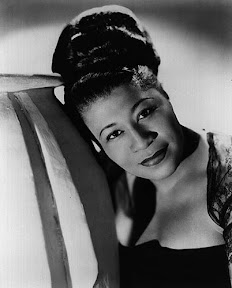 Established in the centre of the town, the Olympic Music Hall presented all the great singing and music hall stars: Ella FITZGERALD, Gilbert BÉCAUD, Charles AZNAVOUR, Manitas de PLATA, Johnny HALLIDAY, etc.
Established in the centre of the town, the Olympic Music Hall presented all the great singing and music hall stars: Ella FITZGERALD, Gilbert BÉCAUD, Charles AZNAVOUR, Manitas de PLATA, Johnny HALLIDAY, etc.Committee for the diffusion of Arts and Letters by the Cinema
The experiment was conclusive judging from the attendances. In ten days there were twenty thousand paying entries, to which must be added four or five thousand guests, which gives an average of two thousand five hundred persons each evening. During the Games, "Grenoble Entertainment" in collaboration with the C.D.A.L.C. (Committee for the diffusion of Arts and Letters by the Cinema), the R.I.F.S. (The International Film Meetings for the Young) and the Grenoble Cine Club organised three film festivals; the second week of the sporting film; film festival for the young, and Homage to French Cinema.Gilbert BÉCAUD
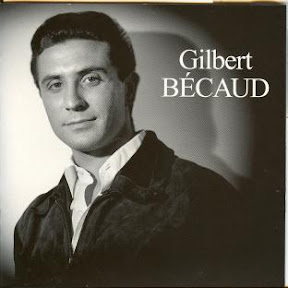
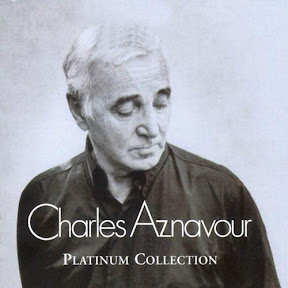
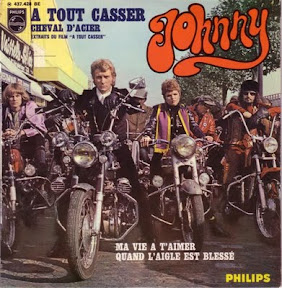
It should also be noted that about ten concerts were given in Grenoble during the month of February. The Municipal Theatre and the Civic Cultural Centre presented rich and varied programmes; Giorgy CZIFFRA, National Orchestra of Paris (conducted by Ch. MUNCH and Serge BAUDO), University choir and interview with Olivier MESSIAEN.
Other artists, Lili LASTINE, Felicien WOLFF, Marie-Claire ALAIN were presented in both Catholic and Protestant Churches. In the domain of plastic art there were numerous manifestations. About twenty exhibitions were specially organized for the games, to which must be added the programmes of the private galleries which also made a remarkable effort.
The exhibitions at the Dauphinois Museum at St-Marie-d'en-Haut, the Art Museum (the finest Provincial Museum), the Le Corbusier and the Snow and Mountain exhibition, to mention only the main ones, were much appreciated.
The Bavarian Tavern, another temporary establishment, attracted extraordinary crowds. Twenty thousand people at least dined there during the period of the Olympic Games.
Two manifestations were outside the limits of what is usually called entertainment. By their originality they contributed to the success of the Winter Olympics.
Organized for those who wanted to profit from their stay in Grenoble to find out about the possibilities of the region, the Centre of Documentation on Regional Life fulfilled its role well.
An original idea which proved a great success was the cultural tours in minicoaches. Installed in the schools of the town, the techni-clubs, recreational centres for the young, fostered interesting contacts between young people from all over the world.

Mini Cooper Cabrio chega por R$ 114.900
 É pessoal R$ 114.900 é a versão mais barata do Mini Cooper Cabrio, que foi apresentado nesta quarta em uma festa em São Paulo.
É pessoal R$ 114.900 é a versão mais barata do Mini Cooper Cabrio, que foi apresentado nesta quarta em uma festa em São Paulo.Ele vem com o motor 1.6 de quatro cilindros com 118 cv que o leva de 0 a 100 km/h em 11 segundos, mas não precisa se preocupar pois tem ABS, controle de estabilidade, quatro airbags e controle de frenagem em piso molhado (também por este preço).
A capota é de tecido com acionamento elétrico e se recolhe em menos de 20 segundos, o acionamento pode ser feito com o Mini em movimento até 30 km/h. A Transmissão é automática de seis marchas com trocas feitas no volante.


Ferrari 458 Italia Spider em 2010
 A Ferrari 458 Italia foi apresentada na última edição do Salão de Frankfurt e a Ferrari informou que no segundo semestre de 2010 irá preparar a produção da 458 Italia Spider, a versão convencível da 458 Italia.
A Ferrari 458 Italia foi apresentada na última edição do Salão de Frankfurt e a Ferrari informou que no segundo semestre de 2010 irá preparar a produção da 458 Italia Spider, a versão convencível da 458 Italia.Como na versão com capota a Spider terá um motor V8 de 4.5 litros com 570 cv de potência.
Honda CR-Z Concept 2009
Esta versão é uma muito próxima da que será produzida para o mercado Japonês em 2010.
A nível mecânico, o CR-Z utiliza o mesmo sistema híbrido do Insight, mas em lugar do motor a gasolina de 1,3 litros ele usa um de 1,5 litros.
Ao contrário do que acontece com o Insight e Civic Hybrid, o sistema híbrido da Honda surge associado a uma caixa manual de seis velocidades, com o objetivo de realçar o caráter dinâmico do modelo. As baterias de níquel metal estão alojadas sob o piso.




Toyota faz Recall por causa do tapete que pode prender acelerador
 A Toyota dos EUA anunciou Recall de 3,8 milhões de veículos devido à possibilidade do tapete prender o pedal acelerador. O maior recall da história da marca japonesa abrange sete modelos, dentre eles, o Camry vendido no Brasil.
A Toyota dos EUA anunciou Recall de 3,8 milhões de veículos devido à possibilidade do tapete prender o pedal acelerador. O maior recall da história da marca japonesa abrange sete modelos, dentre eles, o Camry vendido no Brasil.O problema foi detectado somente após a ocorrência de um acidente no mês de agosto deste ano que causou a morte de quatro pessoas da mesma família, que estavam a bordo de um Lexus ES350 2009 na Califórnia.
O acidente poderia ter passado desapercebido, mas uma ligação para o número de emergências feita por um ocupante do veículo antes do acidente informava que o acelerador estava travado e a velocidade já passava de 190 km/h.
Modelos comercializados nos EUA envolvidos no Recall:
Toyota Camry 2007 – 2010
Toyota Avalon 2005 – 2010
Toyota Prius 2004 – 2009
Toyota Tacoma 2005 – 2010
Toyota Tundra 2007 – 2010
Lexus ES350 2007 – 2010
Lexus IS250 e IS350 2006 – 2010
Como medida preventiva, a Toyota está aconselhando aos proprietários dos carros afetados que retirem o tapete do motorista enquanto o problema não é resolvido.
A Toyota do Brasil, através de sua assessoria de imprensa, informou que ainda não tem informações sobre o recall norte-americano. A marca também informa que Camry vendido no Brasil é importado do Japão, e que por isso, tem algumas diferenças em relação ao modelo norte-americano.
Este recall também serve como alerta para os proprietários de modelos de outras marcas. Utilizar um jogo de tapetes que não são específicos (dimensões) para o seu carro e ficam soltos, podem, não necessariamente travar o acelerador, mas atrapalhar o acesso aos pedais (como o de freio, por exemplo).
Fonte
Infiniti G37 Cupê com pintura inspirada no Cirque du Soleil
 Em comemoração dos 20 anos da Infiniti. A artista plástica Heidi Taillefer fez a pintura de um cupê G37 inspirada no Cirque du Soleil. As pinturas trazem 25 anos de história do Cirque e foi batizado de Ligozzi.
Em comemoração dos 20 anos da Infiniti. A artista plástica Heidi Taillefer fez a pintura de um cupê G37 inspirada no Cirque du Soleil. As pinturas trazem 25 anos de história do Cirque e foi batizado de Ligozzi.O carro não teve sua estrutura modificada, somente recebeu a pintura, que levou um mês para ficar pronta.
O Infiniti G37 ficará em exibição nas lojas da marca no Canadá até o fim do ano. Depois será leiloado e o lucro será revertido a uma instituição de caridade.


Vídeo de Heidi Taillefer desenvolvendo o projeto de pintura do Infiniti G37 Cupê:
E-Wolf e2 o superesportivo elétrico
 A empresa alemã e-Wolf divulgou as primeiras informações sobre o e2, o superesportivo que pode percorrer 300 km com apenas uma carga.
A empresa alemã e-Wolf divulgou as primeiras informações sobre o e2, o superesportivo que pode percorrer 300 km com apenas uma carga.Ele é um pouco parecido com outros superesportivos, tipo o Ferrari Enzo principalmente sua frente.
O e2 pode levar duas pessoas e pesa 900 kg, é movido por 4 motores elétricos, um para cada roda, ficando com 536 cavalos.
Segundo a empresa ele pode ter uma autonomia de 300 km com apenas uma carga e pode ser carregado em pouco mais de meia hora.

"Grenoble Entertainment" Association
"Grenoble Entertainment" an association founded in May 1967 to harmonize and plan the artistic and cultural calendar, was asked by the town of Grenoble to define and carry out a programme of entertainment for the visitors, whilst the "Groupe de Paris" took charge of the entertainments on the Olympic territory.
The number of visitors to the Civic Cultural Centre during the month of February has been reckoned at one hundred thousand.
Municipal Theatre & Civic Cultural Centre
The mission of "Grenoble Entertainment" was to complete the role of permanent organizations such as the Municipal Theatre and the Civic Cultural Centre inaugurated just before the Games by André MALRAUX.Chartreuse de Parme
During the Games, 7 plays and 1 ballet were presented in Grenoble. The performances by the ballets of Maurice BEJART at the Civic Cultural Centre, and of "The Bourgeois Gentilhomme" and the "Chartreuse de Parme" both at the Municipal Theatre, played to full houses.The number of visitors to the Civic Cultural Centre during the month of February has been reckoned at one hundred thousand.
Subscribe to:
Comments (Atom)













